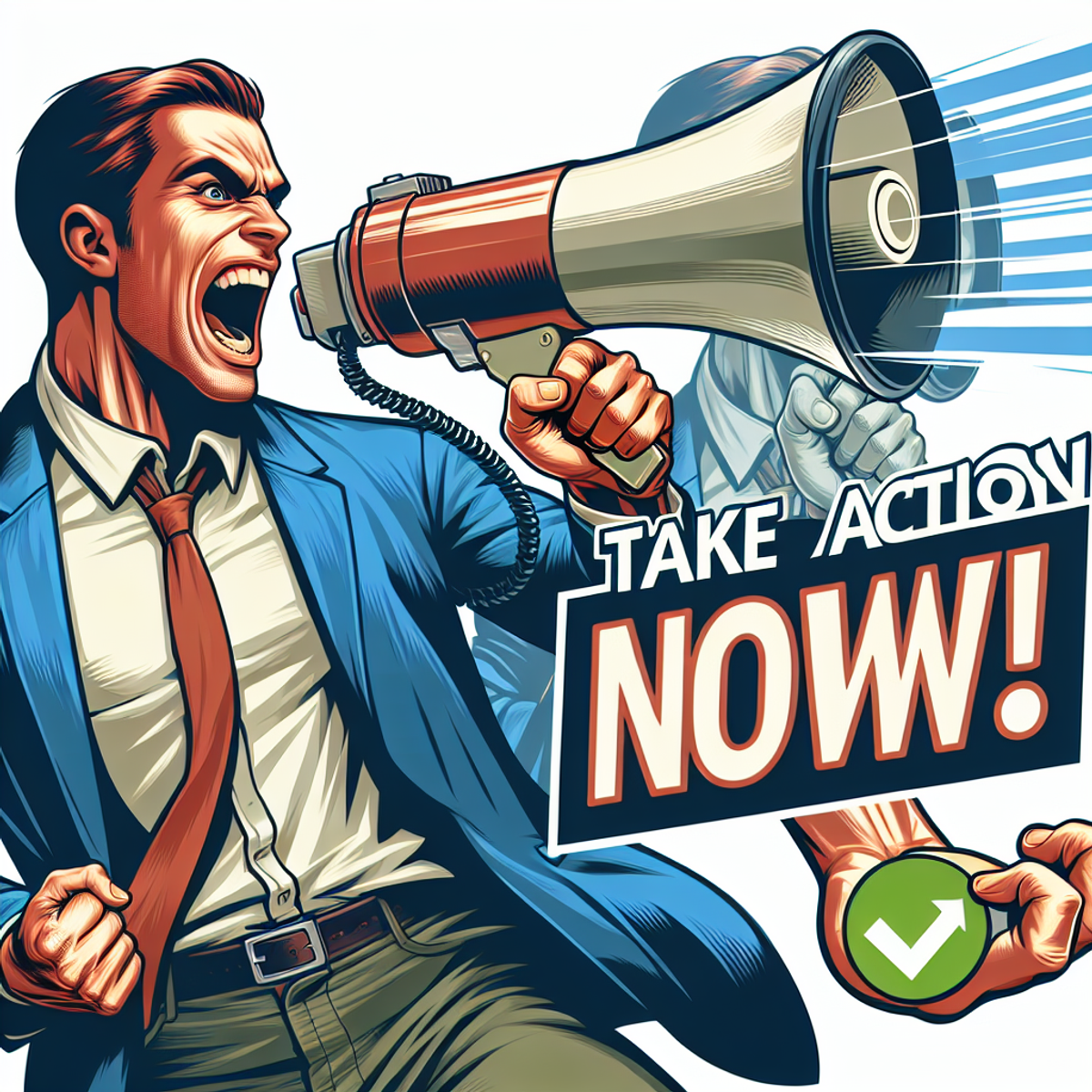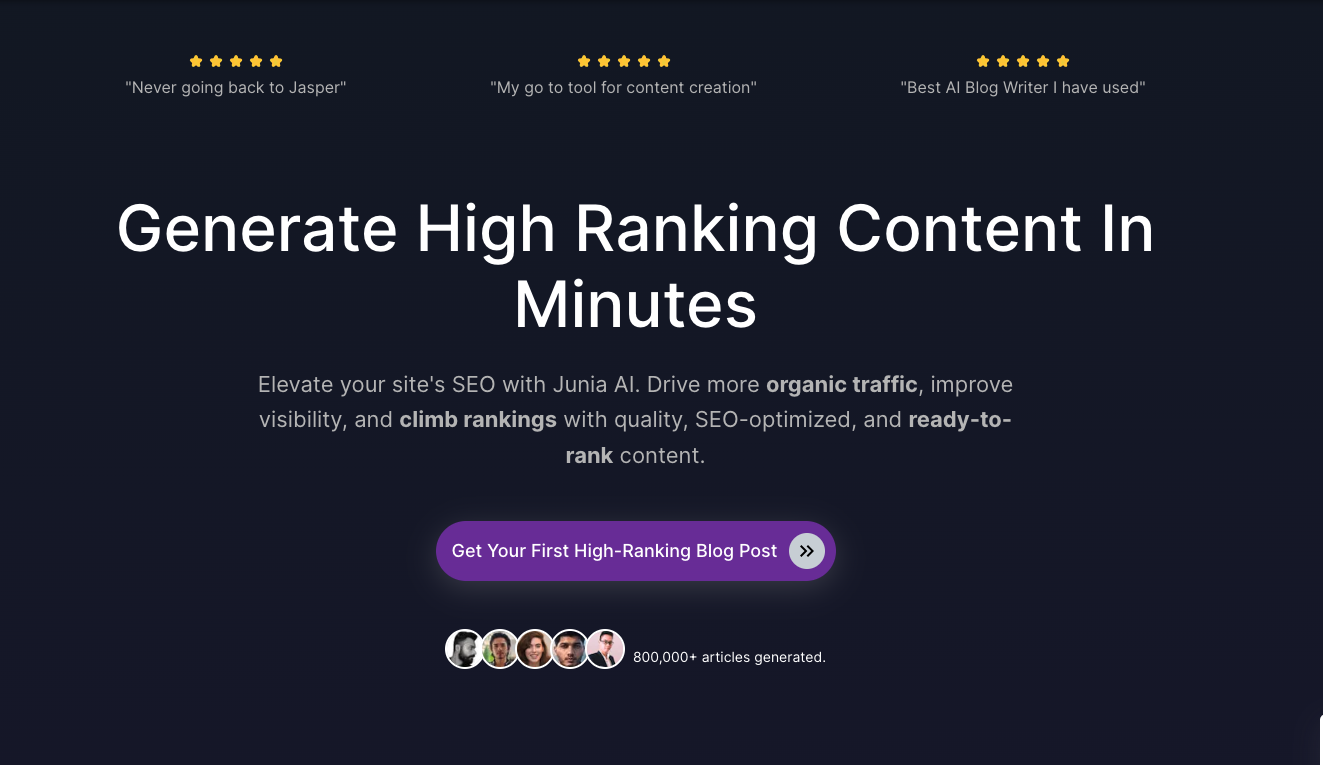Call To Action Generator

Introduction
Imagine the power of a single phrase capable of driving user engagement, boosting sales, and enhancing your brand's online visibility. Yes, you got it right—we're talking about Call to Action (CTA).
CTAs are essential in marketing. They bridge the gap between casual browsing and taking action, turning passive viewers into active participants in your business story. With their persuasive power, CTAs increase the conversion rate and transform potential customers into loyal ones.
But what if we told you there's room for improvement? Enter Artificial Intelligence (AI)—the game-changer in digital marketing. Combining AI with CTAs can redefine how we connect with audiences, creating new opportunities for personalized communication.
Understanding Call to Action (CTA)

In the world of marketing, a Call to Action (CTA) refers to any text or message designed to prompt an immediate response or encourage an immediate purchase. It's a powerful tool that gently guides your audience towards a specific action that brings them closer to becoming a potential customer.
CTAs can be found in various forms across different marketing channels. On websites, they often appear as buttons urging you to 'Subscribe Now', 'Download the Free E-book' or 'Start a Free Trial'. In email campaigns, they show up as compelling texts persuading you to 'Discover More', 'Get Started' or 'Join Us Today'. By using attention-grabbing language that sparks curiosity and creates a desire to learn more, CTAs motivate users to take instant action.
Why CTAs Work
The effectiveness of CTAs stems from their simplicity and clarity - they clearly instruct users on what steps to take next, removing any confusion and making the transition from visitor to customer smooth and intuitive.
Why Are CTAs Crucial for Marketing Success?
CTAs are crucial for marketing success because they:
- Drive results by guiding potential customers towards taking action
- Convert users into leads and customers through clear instructions and compelling reasons to act
- Offer benefits such as increased engagement, higher conversion rates, and clear guidance
Crafting CTAs that resonate with specific audience segments enhances their effectiveness. By addressing the unique desires and needs of potential leads, businesses can create a seamless transition from interest to action. The precision in messaging ensures that every CTA aligns with overarching marketing goals, driving success across campaigns.
Different Types of Effective CTAs You Should Know About
In the world of marketing, there are two main types of CTAs that work well: Direct CTAs and Indirect CTAs. These approaches are different but equally effective in getting the attention of your audience and leading them to take a specific action.
Direct CTAs
Direct CTAs are clear and straightforward commands. They leave no room for confusion or hesitation about what you want your audience to do. Direct CTAs are often used in sales-focused campaigns where the main objective is to get an immediate response from potential customers. Some examples of direct CTAs include:
- "Buy Now"
- "Sign Up Today"
- "Download Now"
Indirect CTAs
On the other hand, Indirect CTAs are more subtle in their approach. Instead of directly asking for an action, they encourage your audience to explore further and discover why they should take that action. Indirect CTAs can be effective in building curiosity and creating a sense of value before asking for a specific action. Here are some examples of indirect CTAs:
- "Learn More"
- "Discover Why We're Different"
- "Explore Our Unique Features"
The Power of Emotional Connection in CTAs
In addition to being direct or indirect, another important aspect of effective CTAs is the ability to create an emotional connection with your audience. Emotionally charged CTAs have the potential to resonate deeply with people, leading to higher engagement and conversion rates.
Instead of using generic phrases like "Subscribe Now", consider using emotionally engaging CTAs that speak directly to your audience's desires or aspirations. For example:
- "Join our community"
- "Become part of our family"
These types of CTAs can evoke a sense of belonging or exclusivity, making them more appealing and increasing the likelihood of clicks.
Choosing the Right CTA for Your Campaign
The success of your CTAs depends on understanding your target audience and campaign objectives. Here are some factors to consider when choosing between direct, indirect, or emotionally engaging CTAs:
- Audience Preferences: What type of language or messaging resonates best with your target audience? Are they more responsive to clear instructions or do they prefer a softer approach?
- Campaign Goals: What specific action do you want your audience to take? Is it an immediate purchase, signing up for a newsletter, or exploring your website further?
- Brand Voice: Does your CTA align with your brand personality and values? It's important to maintain consistency in tone and messaging across all marketing efforts.
By taking these factors into account, you can make informed decisions about the type of CTA that would be most effective for each campaign or communication touchpoint.
Enhancing Conversions: Strategies for Creating Highly Effective CTAs
Creating effective CTAs is an art that balances compelling language with strategic design. To maximize conversions, consider these essential tips and techniques:
1. Be Clear and Concise
Your CTA should convey its message in as few words as possible while being unmistakable in its intent. Ambiguity can deter users from taking action.
2. Use Strong Command Verbs
Start your CTA with verbs like "Buy," "Download," "Subscribe," or "Register" to set a clear action path.
3. Convey a Sense of Urgency
Phrases like "limited time offer" or "while supplies last" encourage users to act promptly to avoid missing out.
4. Highlight Benefits
Let your audience know what's in it for them. If they're going to click, make sure they understand the value proposition.
5. A/B Test
Implement A/B testing on your CTAs to determine which versions yield better conversion rates. Continuous testing leads to continuous improvement.
When incorporating a sense of urgency, balance is crucial—you want to prompt immediate action without seeming overly aggressive or creating anxiety. Phrases like “Act now,” “Don’t miss out,” or “Before it’s too late” strike the right chord, nudging the audience gently towards a decision point.
Tailoring CTA messaging demands understanding your target market and communication context:
- Personalize your CTAs based on user data such as location, browsing behavior, and purchase history.
- The messaging should match the stage of the buyer's journey—whether they're at the awareness stage or ready to purchase.
- Localize language and offers appropriately if you're targeting different geographical locations.
These strategies not only enhance the effectiveness of your CTAs but also ensure that every element of your marketing communications is optimized for conversions.
Junia AI's Call To Action Generator
Junia AI introduces a groundbreaking tool designed to streamline and enhance the creation of CTAs: Junia AI's Call To Action Generator. This innovative software enables marketers and business owners to effortlessly create optimized CTAs using artificial intelligence. With Junia AI, you can:
- Craft Customized CTAs: Tailor your calls to action to fit your specific marketing campaign or audience segment.
- Increase Engagement: Use data-driven insights to create compelling CTAs that resonate with your target audience.
- Save Time: Generate multiple CTA options quickly, freeing up valuable time for other strategic activities.
The simplicity of Junia AI's interface, combined with its advanced capabilities, ensures that even those with limited marketing experience can produce professional-level CTAs. Whether you want to boost click-through rates, drive sales, or engage users on a deeper level, Junia AI's Call To Action Generator is the key to unlocking your campaign's full potential.
